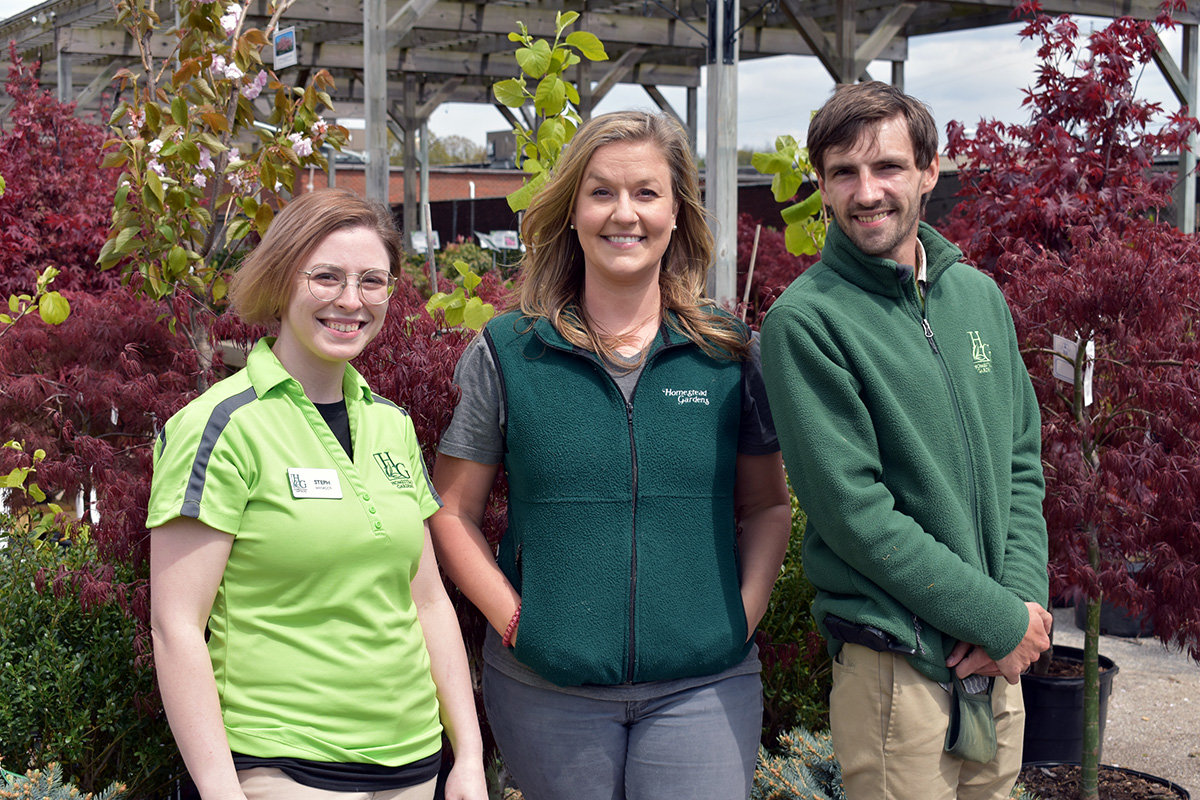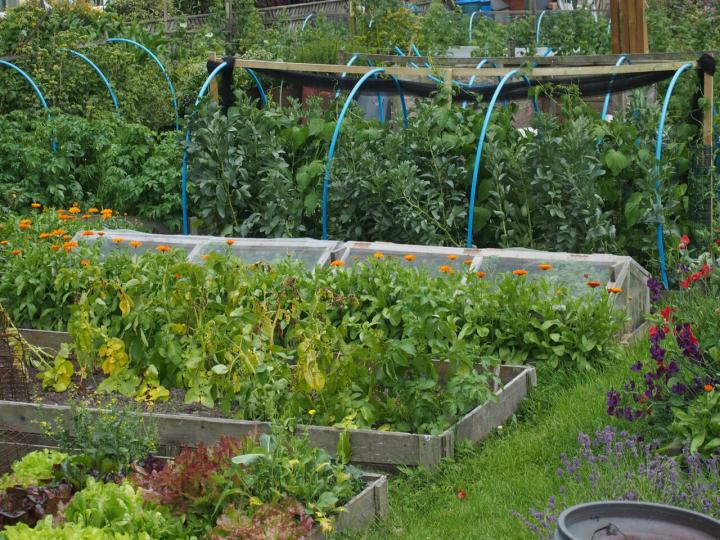The Best Plants to Pair in Homestead Gardening
The Best Plants to Pair in Homestead Gardening
Blog Article
Reveal the Tricks to Creating a Stunning and Productive Gardening Space
Developing a stunning and productive horticulture space is not just a matter of growing flowers and veggies; it calls for a calculated approach that includes various vital elements. From choosing the right location based on sunshine and dirt type to attentively designing your design and picking suitable plants, each choice plays an essential role in the success of your garden. Recurring upkeep is important to maintain its elegance and productivity. As you contemplate these factors, consider exactly how they link to open the complete capacity of your horticulture undertakings. What particular approaches can elevate your space beyond the common?
Picking the Right Area
Choosing the perfect area for your garden is crucial to its success and total aesthetic charm. The first action in this process involves examining sunlight exposure, as the majority of plants require at the very least six hours of straight sunlight daily (Homestead Gardening). A south-facing garden commonly receives one of the most light, while shaded locations can hinder development and blooming
Additionally, think about dirt top quality and drainage. Well-draining dirt is crucial to avoid water logged origins, which can result in plant illness. Performing a soil test can supply beneficial information concerning pH levels and nutrition web content, allowing you to modify the dirt accordingly.
Additionally, distance to water sources is one more aspect to evaluate - Homestead Gardening. Having very easy access to a tube or watering system can streamline the watering procedure and urge regular plant treatment. Wind defense is additionally vital; placing your yard near frameworks, such as walls or fencings, can secure it from severe winds that might damage fragile plants
Lastly, consider ease of access for maintenance and harvesting. A well-placed garden enables hassle-free accessibility, making certain that you can conveniently often tend to your plants without triggering unnecessary tension or disturbance. Thoughtful area option lays the structure for a growing garden.
Picking Plants Sensibly
When selecting plants for your garden, it's necessary to consider variables such as climate, soil problems, and personal choices to make sure a harmonious and productive room. A detailed understanding of your regional climate will certainly direct you in choosing plants that thrive in your particular environment. Picking drought-resistant ranges is advantageous in arid areas, while moisture-loving species might be more proper for areas with high rains.
Dirt conditions are just as vital; conducting a soil examination can reveal pH degrees and vitamins and mineral material, permitting you to choose plants that will prosper. Native plants are commonly an excellent option, as they are typically well-adapted to regional dirt kinds and require less maintenance.
In addition, consider your horticulture goals. Are you aiming for an ornamental display, a veggie yard, or perhaps a combination of both? This will certainly affect your selections substantially. Mirror on your personal preferences-- choosing plants that reverberate with your visual preferences will certainly boost your satisfaction and dedication to keeping your yard. By carefully assessing these elements, you can produce a flourishing and diverse plant option that elevates your horticulture experience.
Designing Your Yard Design
With a thoughtfully picked plant choice in hand, the next action is to produce a garden format that makes best use of both elegance and capability. Begin by evaluating the available room, thinking about elements such as shade, sunshine, and wind patterns. A well-planned format ought to include different areas, including locations for planting, paths, and perhaps seating.
Begin with bigger plants or prime focus, such as trees or high perennials, put strategically to produce aesthetic rate of interest. Layer smaller sized plants in front to improve deepness and texture. Take into consideration the growth routines of your chosen plants; taller ranges should be positioned at the back or center of beds, while shorter ones can line the sides.
Incorporating pathways not just facilitates gain access to for upkeep more info here but likewise welcomes expedition. Use materials that match the yard's general aesthetic, whether wood, stone, or gravel chips.
Furthermore, consider seasonal modifications and just how your format will look throughout the year. Incorporating evergreens alongside seasonal flowers can guarantee year-round appeal. Eventually, a properly designed garden design harmonizes the natural beauty of plants with practical factors to consider, causing an area that is both inviting and productive.
Enhancing Dirt Wellness

To boost soil health and wellness, begin by carrying out a dirt examination to assess pH levels, nutrition web content, and dirt texture. Incorporate organic matter such as compost, well-rotted manure, or fallen leave mold to enhance soil structure, water retention, and microbial activity.
Mulching is one more reliable approach; it not just preserves dampness but also suppresses weeds and slowly enhances the soil as it breaks down. Preventing extreme tillage is critical, as it can interfere with dirt framework and injury advantageous organisms. Instead, adopt no-till or minimal tillage practices visit this website to maintain dirt honesty.

Maintaining Your Yard Properly
A well-maintained garden provides pride and productivity, calling for regular focus to make certain that plants you can find out more grow and the landscape continues to be welcoming. Reliable yard upkeep includes a number of essential practices that improve the health of your plants and the overall visual of your room.
Routine watering is vital; nevertheless, it is crucial to tailor your watering schedule based upon the details requirements of your plants and regional climate problems. Mulching can assist retain dampness, subdue weeds, and control soil temperature level. Additionally, timely weeding prevents competitors for resources and nutrients, making certain that your plants grow.
Trimming is one more vital task. It urges healthy and balanced growth, gets rid of dead or infected branches, and shapes plants to preserve an appealing framework. Additionally, monitoring for bugs and diseases is essential; early detection and intervention can save your plants from substantial damages.
Fertilizing should be carried out thoughtfully, utilizing natural choices whenever feasible to promote long-lasting dirt health and wellness. Seasonal jobs such as planting, splitting perennials, and preparing for winter months will certainly guarantee your garden stays lively year-round. By adhering to these methods vigilantly, you can grow a garden that is both efficient and lovely.
Conclusion
Picking an ideal place with appropriate sunlight, choosing ideal plants, making a cosmetically pleasing design, improving soil wellness, and making certain routine upkeep are necessary elements. By incorporating these techniques, one can grow a growing garden that not only enhances the landscape yet additionally advertises ecological equilibrium and sustainability.
From choosing the right location based on sunshine and dirt type to attentively developing your layout and picking appropriate plants, each choice plays an essential role in the success of your yard. Well-draining soil is important to protect against water logged origins, which can lead to plant illness.When choosing plants for your yard, it's important to take into consideration aspects such as climate, soil problems, and personal choices to guarantee a unified and efficient room. Ultimately, a properly designed garden design harmonizes the natural elegance of plants with useful factors to consider, resulting in an area that is both welcoming and effective.

Report this page